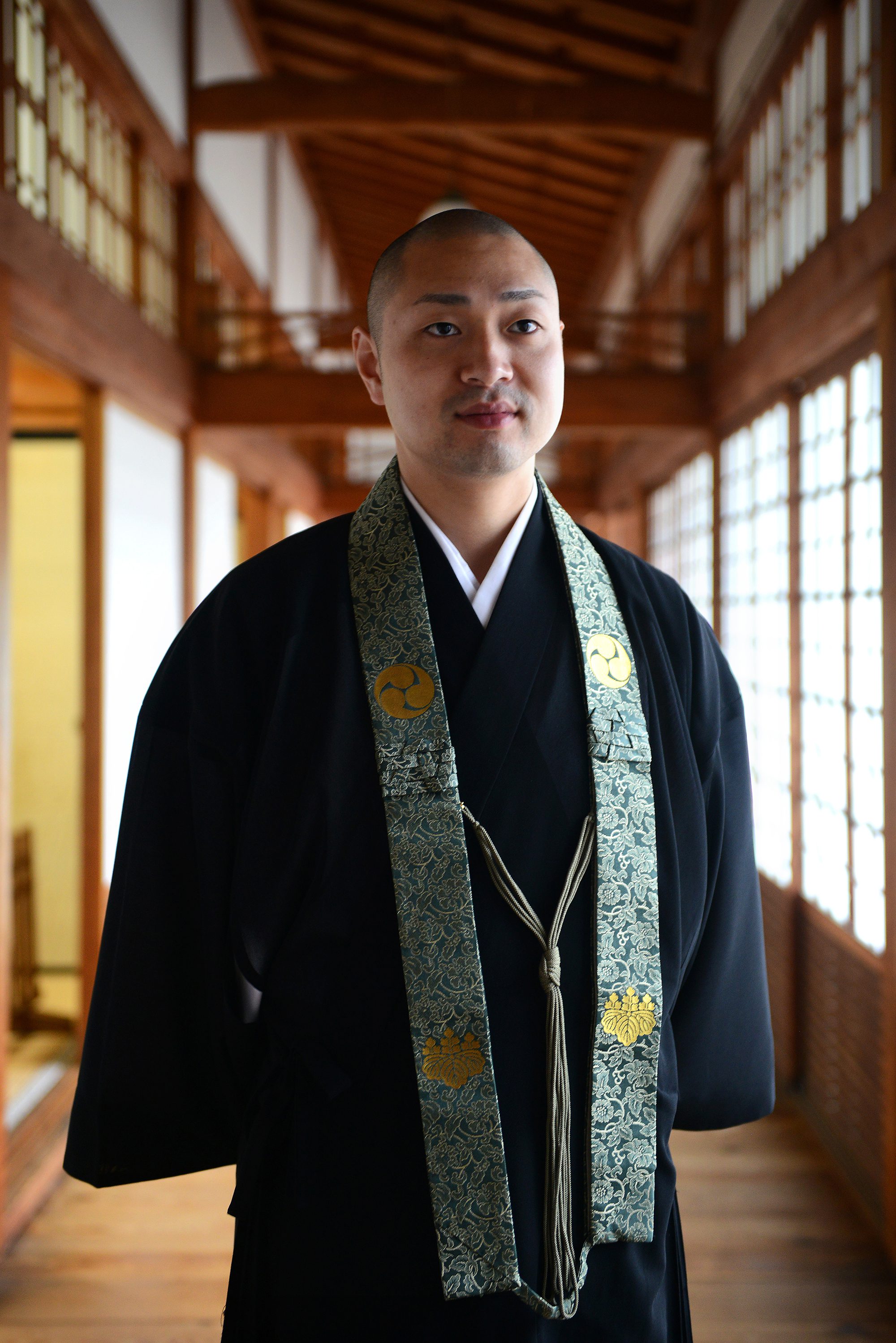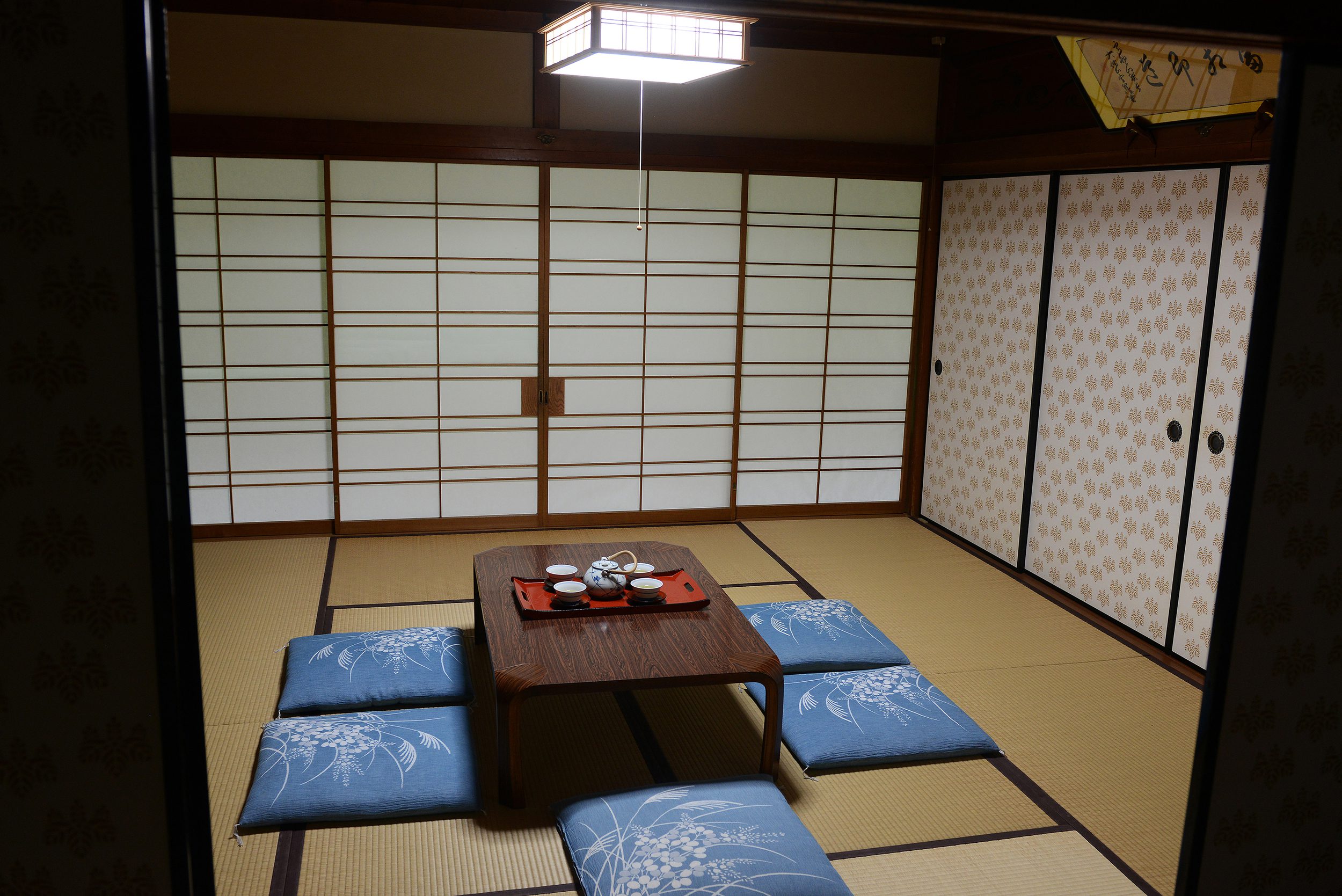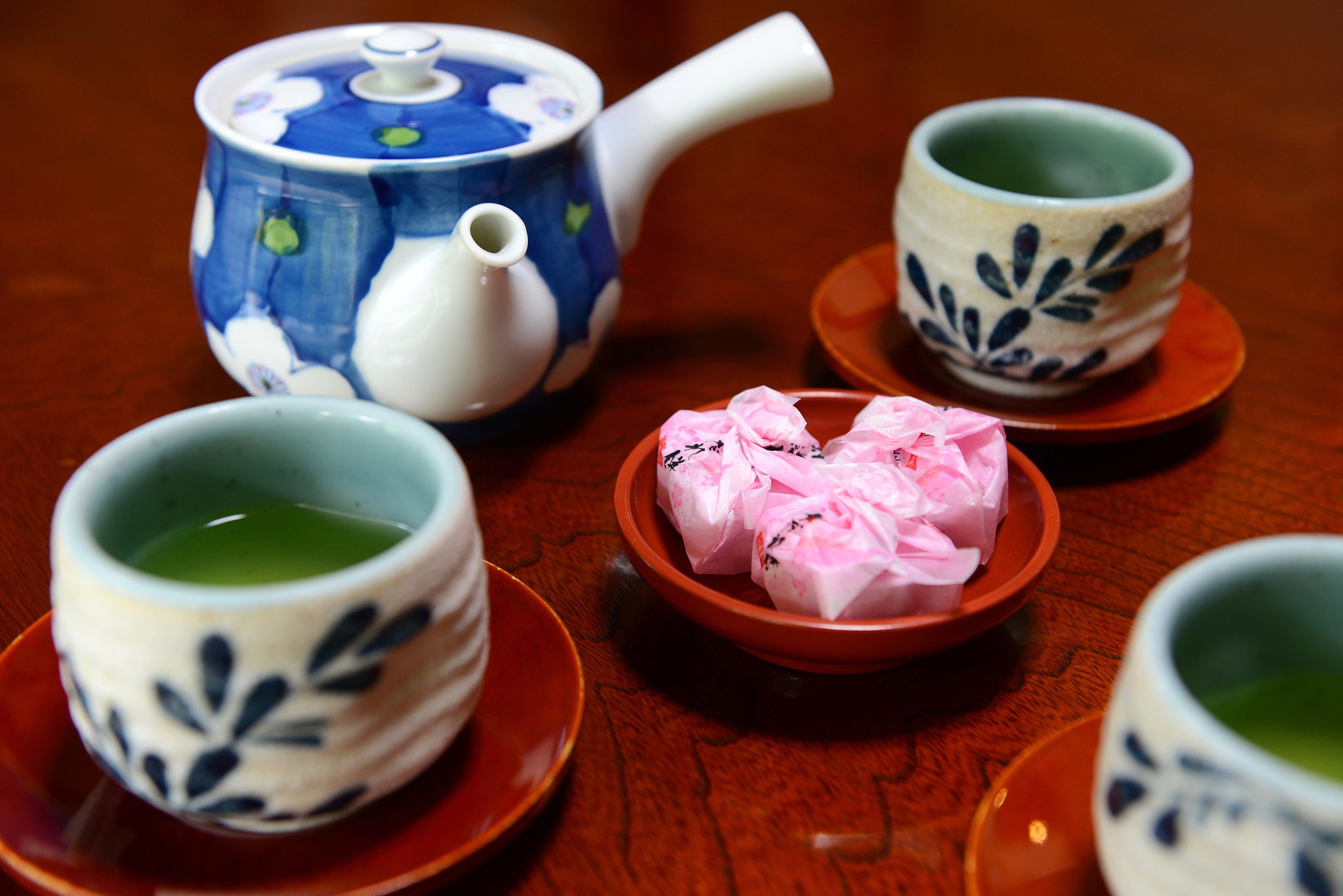I’ve slept on a luxurious private island in Fiji, in the trunk of a small car at a Greek campground, and quite a few other places in between. But one of my most spectacular overnight stays of all time has still been the nearly thousand-year-old temple in the village of Koyasan in Japan, surrounded by wooded mountains on a plateau.
What was the place like? And how can you even stay in the temple?

From the outside, the place looked a bit secretive, as the dark-wooded building was hidden by high walls. As we entered through a small wooden gate, we were in the middle of a rock garden. Its gravel cover was patterned with regular lines and decorated with crushed stone of different sizes, in the traditional Japanese way.
A blue-robed monk boy was waiting at the door of the main building, smiling and saying, “Welcome to the Yochi-in Temple, the Temple of the Cherry Blossom”.
We changed our shoes on the stairs to red ones waiting, which barely fit on my feet. The board floor creaked underfoot as we wandered into the maze in the maze-like wooden building. The space, consisting of two small rooms, had a low table with seat cushions, nothing else.
There was only one solid wall, the others were paper doors sliding aside. You had to be careful what doors opened – you didn’t end up in the next room by mistake.
The monk poured a large porcelain pot of green tea into many cups. An English-speaking guide sat down to interpret. It was time to talk. I was stunned. What are we talking about with the monks?
The dinner table was like an altar of sacrifice to the gods, although there is no such thing in this religion. On the floor, on top of small tray platforms, 11 small cups were covered for each. There was miso soup and tofu, tempura vegetables, cold noodles, and a lot of spicy pickles, among other things I couldn’t name – a serving of the doll each (there were only two boiled green Papua in one cup).
In what order were they to be eaten, or did it really matter?
“Of course not. Everything has a purpose and an order, but guests don’t have to care about it, ”the monk promised and recounted the philosophy behind the food, such as making only vegetarian food in the temple. The people of the house ate modestly, only so many varieties were brought to the guests. Even beer and sake were offered.
I really worked hard to grab every single grain of rice into my mouth with chopsticks. In the end, green tea was drunk from the same cup.

From nine o’clock in the evening, the cumin of Congo rushed to every corner of the temple building. It sounded both ghostly and cozy. The night had begun. The bed was a sister’s bed with thin mattresses on the floor. The pillow was hard and lumpy like a bag of rice. I don’t know if that’s more of a control, or all the countless cups of green tea I had drunk over the evening. Or maybe silence. There was nothing at all, not a sound – not even though there was no sound insulation, the walls were paper.
A night trip to the bathroom felt like an adventure. In the silent nitrogen-empty corridors of Hips, past a room with an altar with golden statues. Light echoed from the windows behind which was a small pond and garden.
At six in the morning, the cone erupted again. It invited to the first ceremony of the day, one that visitors could choose if they wished. I walked halfway to a hall whose darkness was broken only by the flames of candles. It smelled of incense that smoked in a black iron pot in front of the altar.
I sat on the floor with a couple of other travelers. In front of the altar, three monks recited sacred texts with a singing, monotonous note, non-stop, for at least half an hour. It was hard to keep my eyes open, it was so reassuring. Finally, we guests were allowed to participate in the statement, with the sentences printed out in the handouts. Then one of the monks turned to us and smiled. “What else would you like to know”?
WHERE? The Yochi-in Temple is located in Koyasan, about a hundred kilometers south of Osaka. It can be reached by train e.g. From Osaka or Kyoto. The final stop of the train is Gokurakubashi. From there, take a steep hillside by tram to Koyasan Station.
WHAT? The village of Koyasan has less than 4,000 inhabitants. It is the center of Japanese shingo Buddhism, with a university focused on religious studies and more than a hundred temples inhabited by monks. The oldest shrines are from the 8th century. At one time only monks were allowed to go to Koyasan, but a hundred years ago the gates were opened to other guests as well.
HOW? Temple overnight stays, shukubo, can be tried in many places in Japan, but in Koyasan it is easiest: accommodation is provided by fifty temples accustomed to Japanese and foreign tourists. The night costs 10,000 to 16,000 yen, about 80 to 120 euros per person. Dinner and breakfast are included in the price. Bathrooms and toilets are usually shared, for women and men. The Yochi-in Temple has modern toilets and baths, impeccable cleanliness and air conditioning / heating, making your stay comfortable in summers and winters.







